1/5 – 10/5/2001

On May Day, we made a quiet crossing of the Peru/Bolivia border and continued on a dirt track along the shore of Lake Titicaca

to Copacabana; where we enjoyed the wonderful views over the Lake; which is 3,800 metres above sea-level.


We took the boat for a ten-hour tour of La Isla del Sol.
![]()
![]()

![]()
Our Quechua guide


gave an animated description of the island’s history and its place in the Incan origin myth.

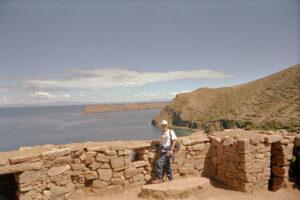
We crossed the Strait of Tiquina,

on a rather rickety ferry,
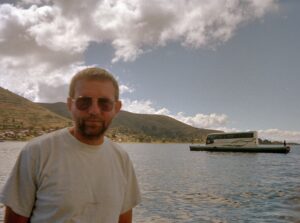

as we made the long loop around the south-eastern end of the Lake to visit the ruins of the pre-Incan city at Tihuanaco.

![]()
![]()


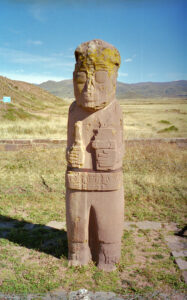

We reached La Paz late next morning. We could find nowhere to park and so drove straight through the centre of the city

and continued for 24o km

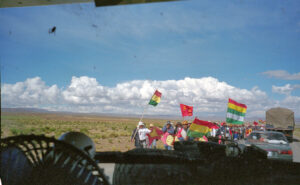
to Ororu.
Next day, we continued south through the heart of the Bolivian altiplano.
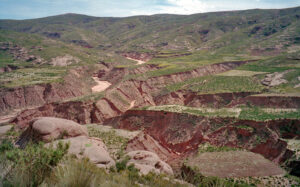

The last 140 km of the road into Potosí were a rocky piste.
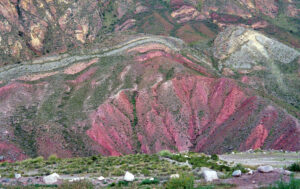
Potosí bills itself as the highest city in the world (at an altitude of over 4,000 metres).


For hundreds of years it was the Spanish colonial silver mint. The mine-riddled Cerro Rico (‘Rich Hill’) looms over the town.

The track to Uyuni

took us through some bleak but beautiful country,

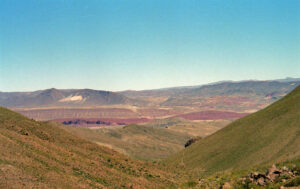
and past small, remote Quechua settlements


on our way to the Salar de Uyuni;


the largest salt lake in the world.


We continued on the rough track for two more days;


passing lakes,


crossing dry lake beds,


and on one occasion getting bogged in marshy ground while crossing a ford, before we reached Laguna Colorado.
![]()

![]()

At an altitude of 3,300 metres the water of the shallow salt lake is coloured brick-red by minerals,

and by algae that support a flock of flamingoes.

The night we spent camped on the salt-encrusted shore of the lake



was the coldest of the trip so far. By the morning, there was thick ice on the insides of our windows and the water had frozen solid in our tank.
In contrast, next day we visited an area of geysers

and boiling mud pools


and passed Laguna Verde;

getting lost for a few hours,

before finally finding the remote border post with Chile at the Hito Cajón mountain pass.

Different terrain again with largest salt lake and dried up lakes. What a contrast in temperatures.
All those landscapes are stunning – but actually I am quite drawn to the photos of the small villages, especially the one with all the livestock and the little girl with the pink hat.
The red lake makes a very interesting photo, it looks surreal. And that snow-topped volcano, it could have been Mount Fuji!
Your never-ending confidence and sense of adventure (or is it a case of ‘ignorance is bliss’!!) never ceases to amaze us. Amazing scenery.